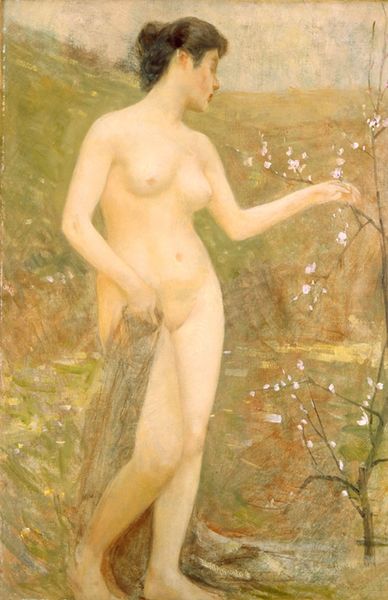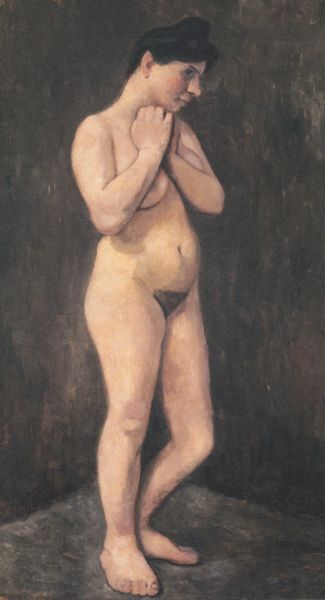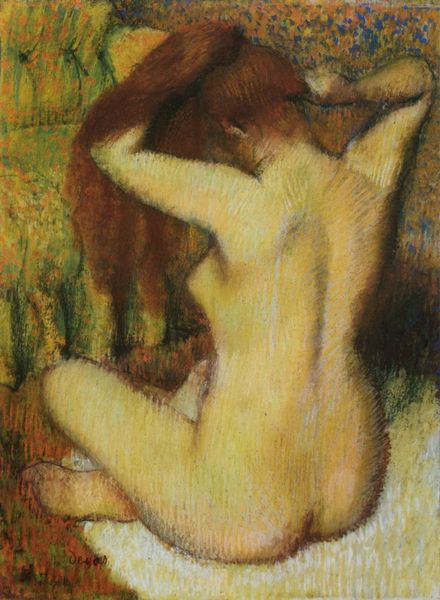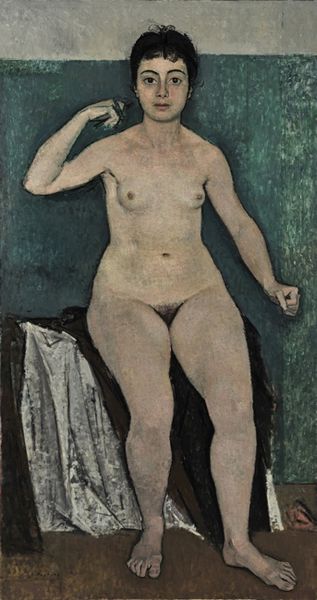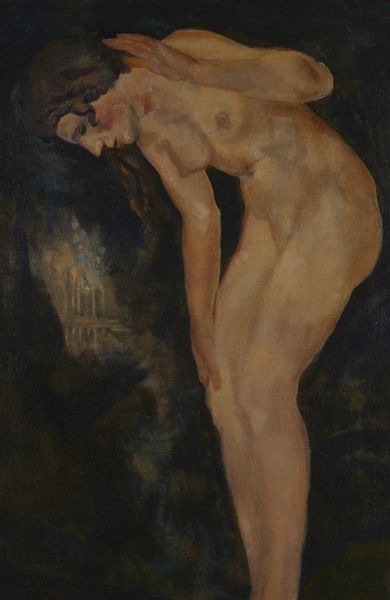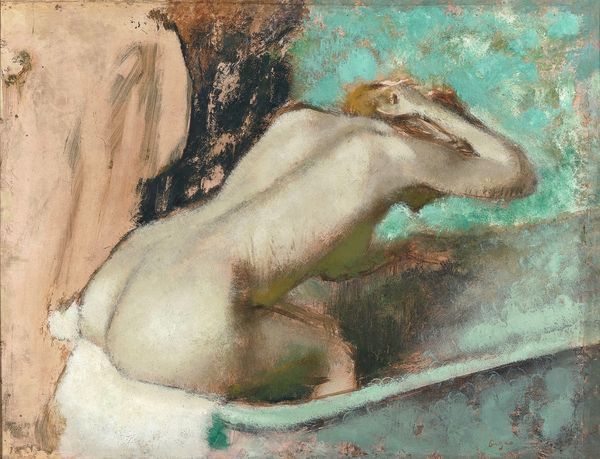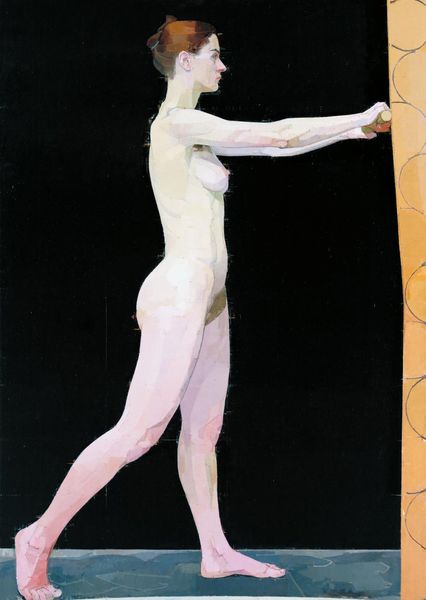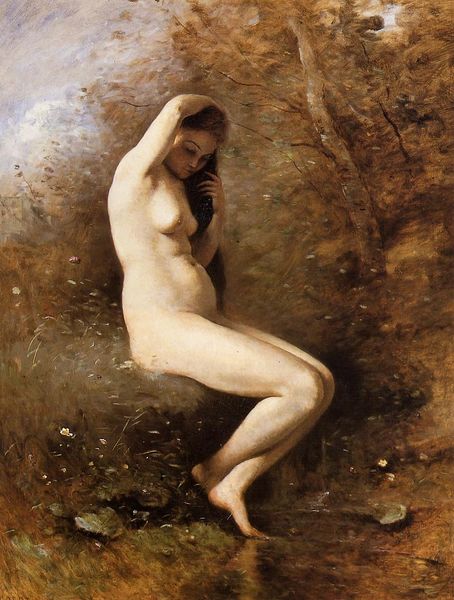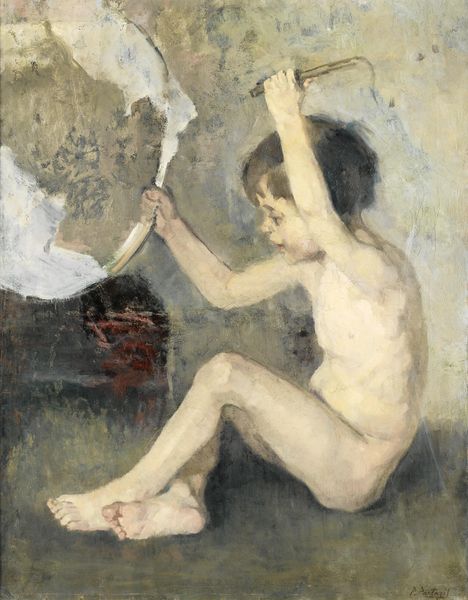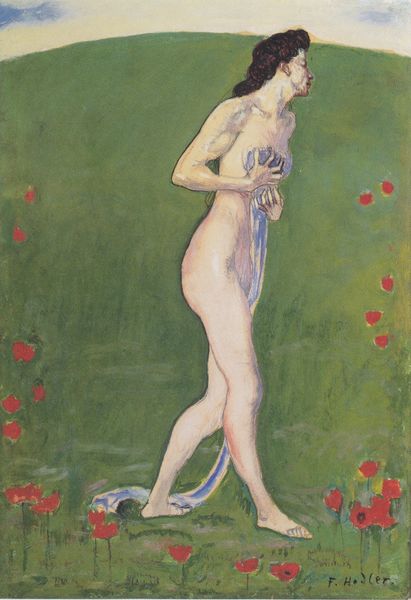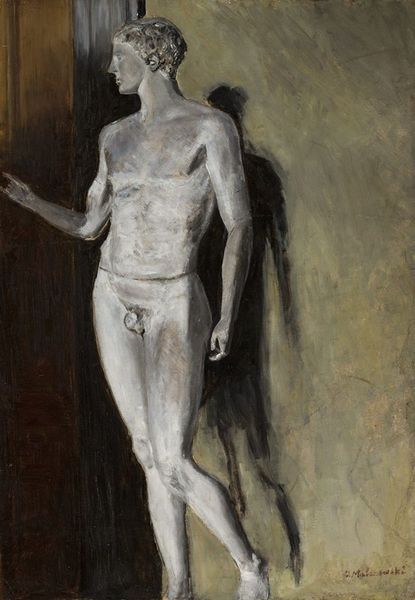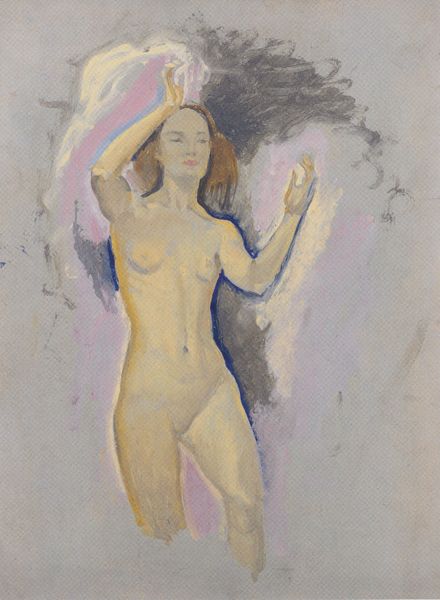
Dimensions: 159 x 97 cm
Copyright: Public domain
Editor: Ferdinand Hodler’s “Communication with the Infinite,” painted in 1892 using oil paint, presents a solitary nude figure against a verdant backdrop. I'm struck by the starkness of the figure against the dreamy background. How do you interpret this work, especially given the title? Curator: It's tempting to see the figure’s nakedness as an assertion of the natural body, but think about it in context: late 19th-century European art was grappling with anxieties about modernity. So, is this “communication” a plea or a challenge to those societal norms? Does this figure feel powerful, or exposed? Editor: That's a really interesting way to frame it! I was initially thinking of the figure as almost religious, reaching towards some higher power, but I didn’t consider the social implications. Curator: Exactly! Hodler was part of a Symbolist movement that was often exploring the internal and the psychological. The painting acts as a challenge to think about power and vulnerability in the context of representation, even today. The pose isn’t inherently submissive or dominant, is it? Editor: It’s like she’s mediating between different worlds, internal and external, or maybe physical and spiritual. It’s definitely a powerful statement about being a woman at the time. Curator: And the fact that Hodler was Swiss is important. Neutrality perhaps allows for a different kind of gaze, a different way of framing identity at this particular juncture in European history. Editor: So, the location influences the artwork, and it makes me think that she is sort of protesting the social norms of the period by connecting with her inner, raw emotions, and finding balance with her inner power. Curator: Right! And reflecting on our current social climate alongside past influences further demonstrates art as both reflective and predictive. It's still communicating today.
Comments
No comments
Be the first to comment and join the conversation on the ultimate creative platform.
